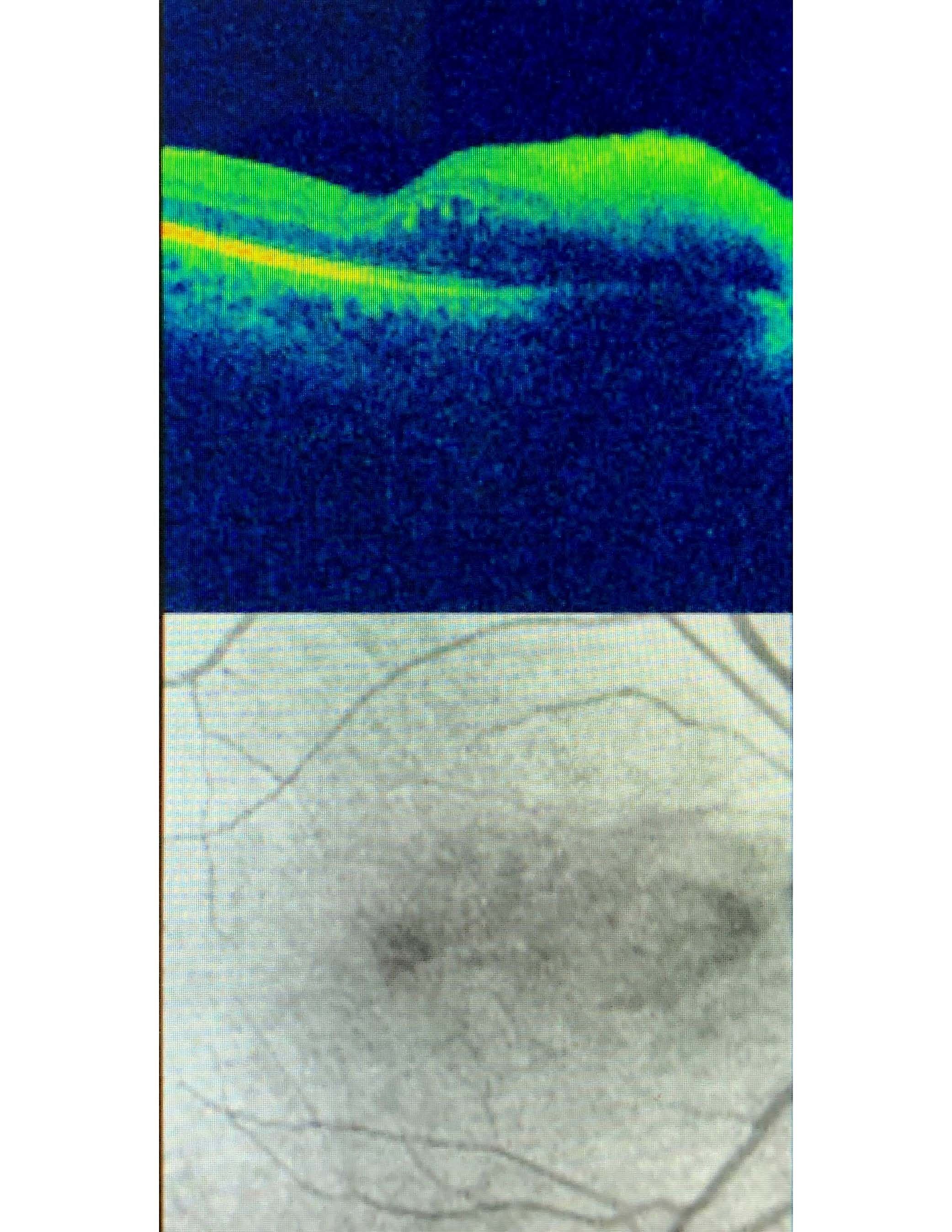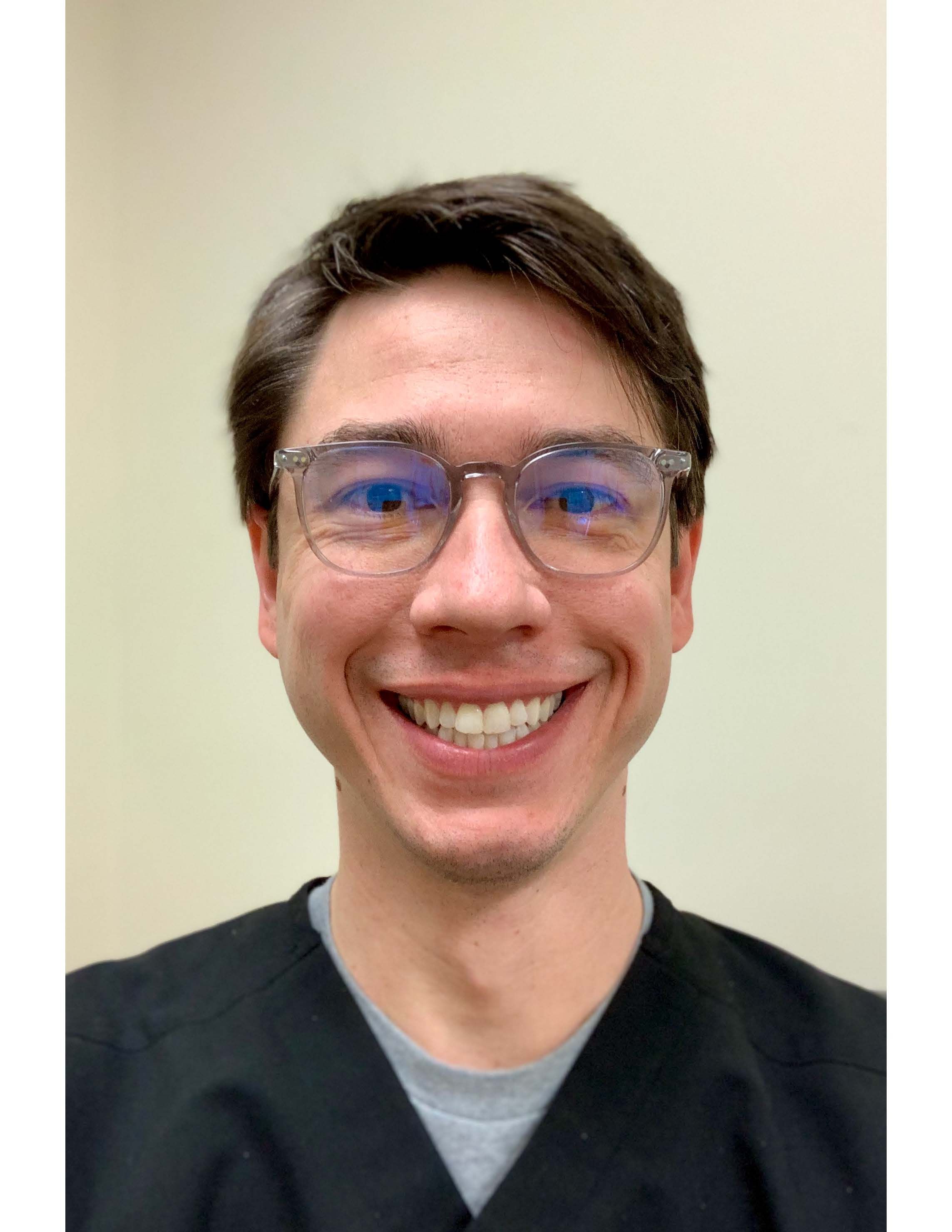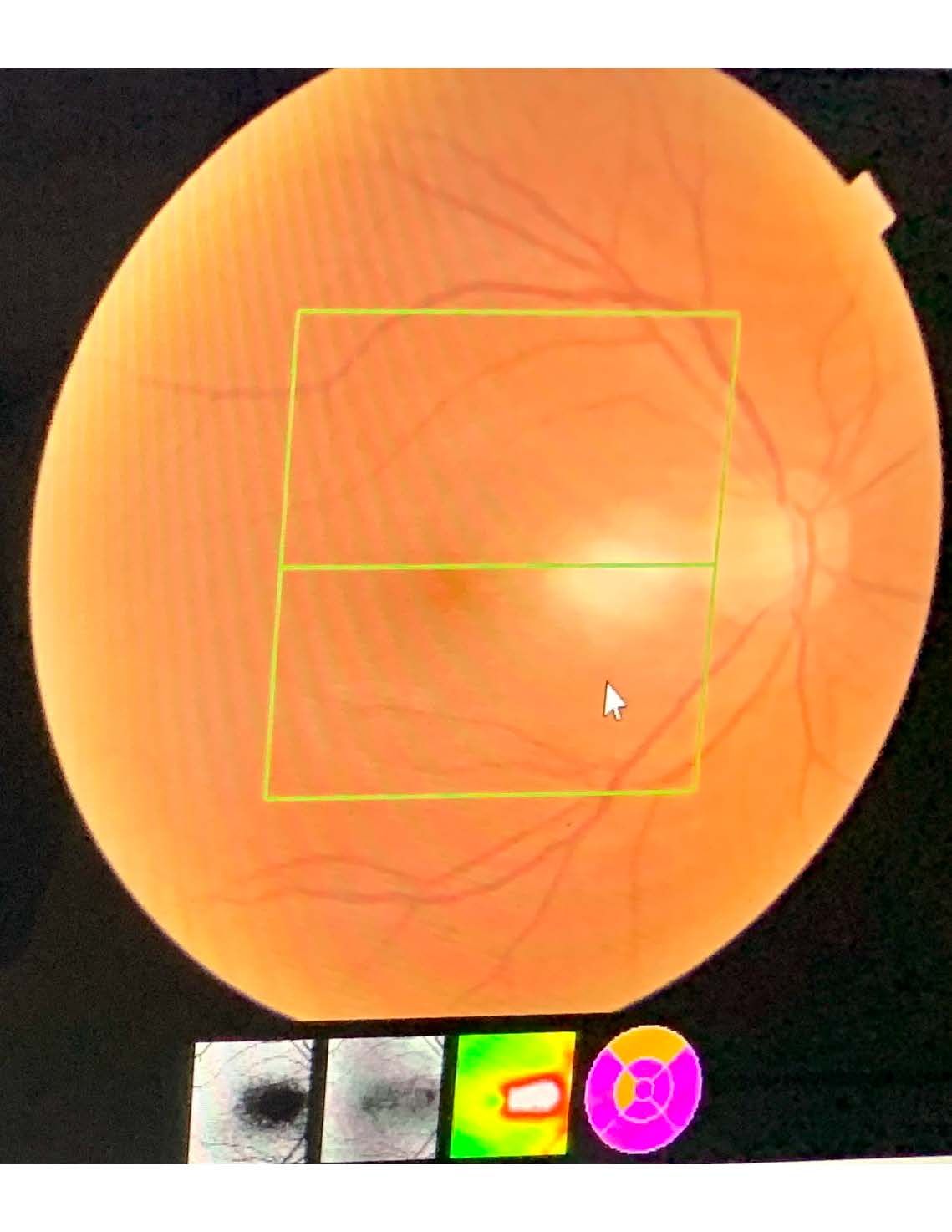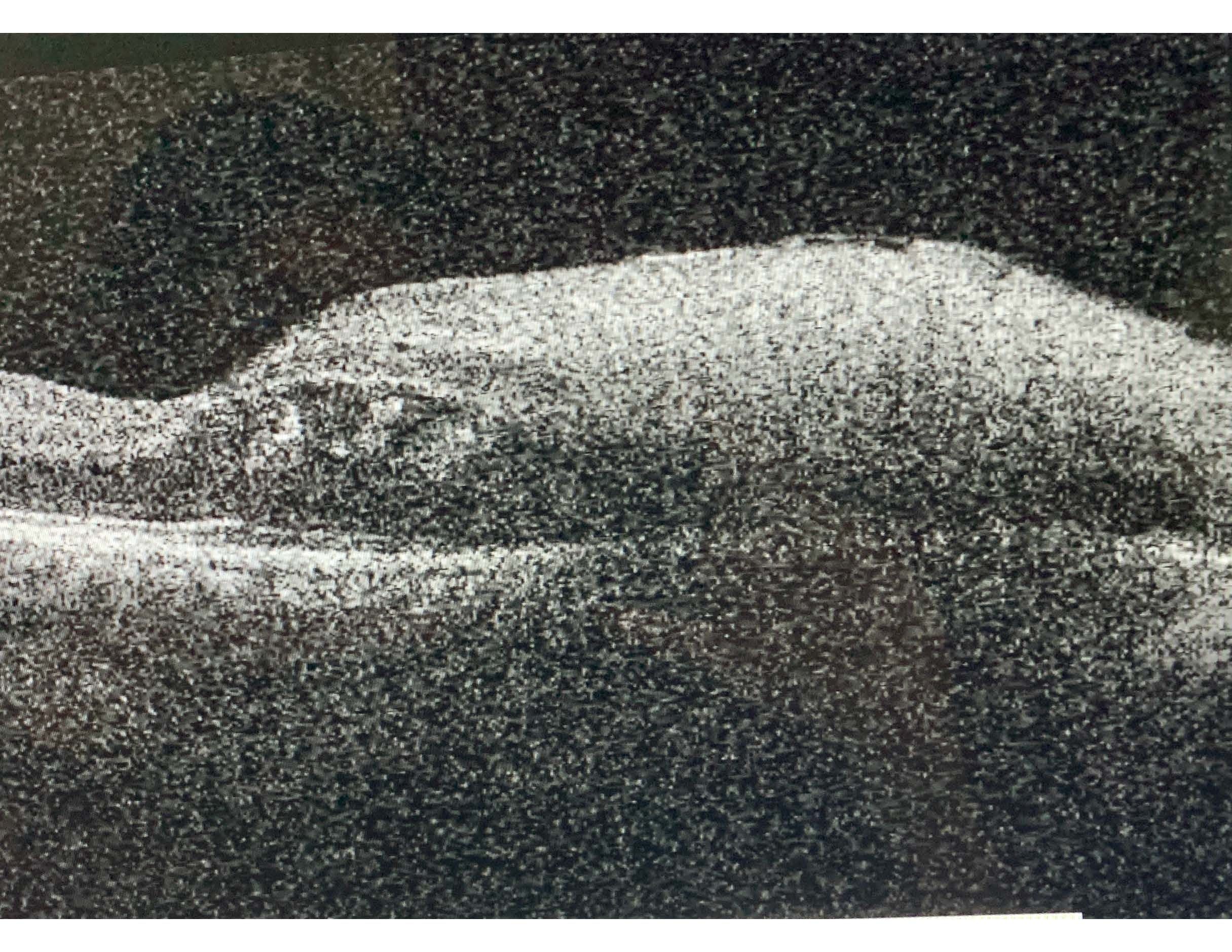Retina presentation looks familiar
Clinician recalls journal article, uses information to coordinate patient care.

Justin McElroy, OD, is in practice in Laurel, MS

Figure 2

Figure 3

Walk-in, urgent visit, check eye, emergency. However one chooses to designate these kinds of appointments in the scheduling software doesn’t really matter. They all mean one thing: put on your thinking cap.
Most of the time these appointments are jammed into an already full schedule, and most of the time they are short and sweet.
The head scratchers, the true emergencies, are few and far between-at least that has been the trend for me since graduating from optometry school in 2017. Still, my mantra before walking in to take a look after being debriefed by my technician is, “It ain’t rare if it’s in your chair.” I have my vision science/neuro instructor at Southern College of Op-tometry in Memphis to thank for this. What makes sense? What doesn’t? Probably a horse, not a zebra, but what if I’m wrong?
Related: Time in range as an alternative to HbA1c
Cup of coffee and reading
As young optometrist, there are a few things I always carry in my work bag-my Wills, my Mass Eye, my Neuro Opth. Illustrated Atlas, and Altoids breath mints. Each gets a fair amount of use, especially with the head scratchers, so I try to make a few margin notes with each new encounter as I am working out differentials.
Admittedly, I rarely sit down with a nice cup of coffee and read a few chapters in Wills. I just don’t get much out of it.
Now, periodicals are another story. I have a liberal arts background, so I enjoy the process of reading, evaluating, and discussing scholarship.
Our office group subscribes to all the major publications, so between patients I like to pick up whatever is lying around. I lived and worked in Memphis for about 10 years, and I was fortunate to work and share patients with Mohammad Rafieetary, OD, FAAO.
I walked in from lunch one afternoon and saw his toxoplasmosis retinochoroiditis article on the cover of the November 2019 issue of Optometry Times, so I poured a cup of coffee and started looking for his wonderful sense of humor to peek out from the narrative.
Related: OCT in DR follow-up highlights importance of retina-vitreous attachment
Using what I learned
A few weeks after reading his article, a “check eye” was added to my schedule one morn-ing.
The patient had experienced sudden vision loss over the weekend, and by the time he presented to our clinic on Monday morning things had deteriorated. My technician per-formed the preliminaries, and I walked in to take a look. The patient’s intraocular pres-sure (IOP) of 40 mm Hg, moderate cell front to back, and retina presentation looked strangely familiar (See Figures 1-3).
Thanks to that article written by Dr. Rafieetary in Optometry Times, I could confidently reach for an Rx pad and jot down the recommended bloodwork. I had my scribe contact the patient’s pharmacy and coordinated a consult with the local retina specialist.
Related: New-onset, atypical retinopathy in a patient with diabetes
Pick up a journal
As healthcare providers, optometrists all hold deep-seated convictions for the well-being of their patients, but our gift for empathizing and our desire to make lifelong personal connections and experiences go only so far.
Keeping up with new evaluation and treatment methods should be equally important. Revision of clinical manuals takes lots of time. Many ODs binge continuing education hours just once a year. Thankfully, we have a wonderful resource at our disposal-our serials. From formal, academic reports to informal, conversational case reports, journal articles are absolutely necessary to my development as a clinician.
The next time you reach for your smartphone during a break in clinic, think again.
Instead, pick up a journal and augment your semantic memory so that when that unique case walks in the door, you can focus on the personal experience.
Newsletter
Want more insights like this? Subscribe to Optometry Times and get clinical pearls and practice tips delivered straight to your inbox.